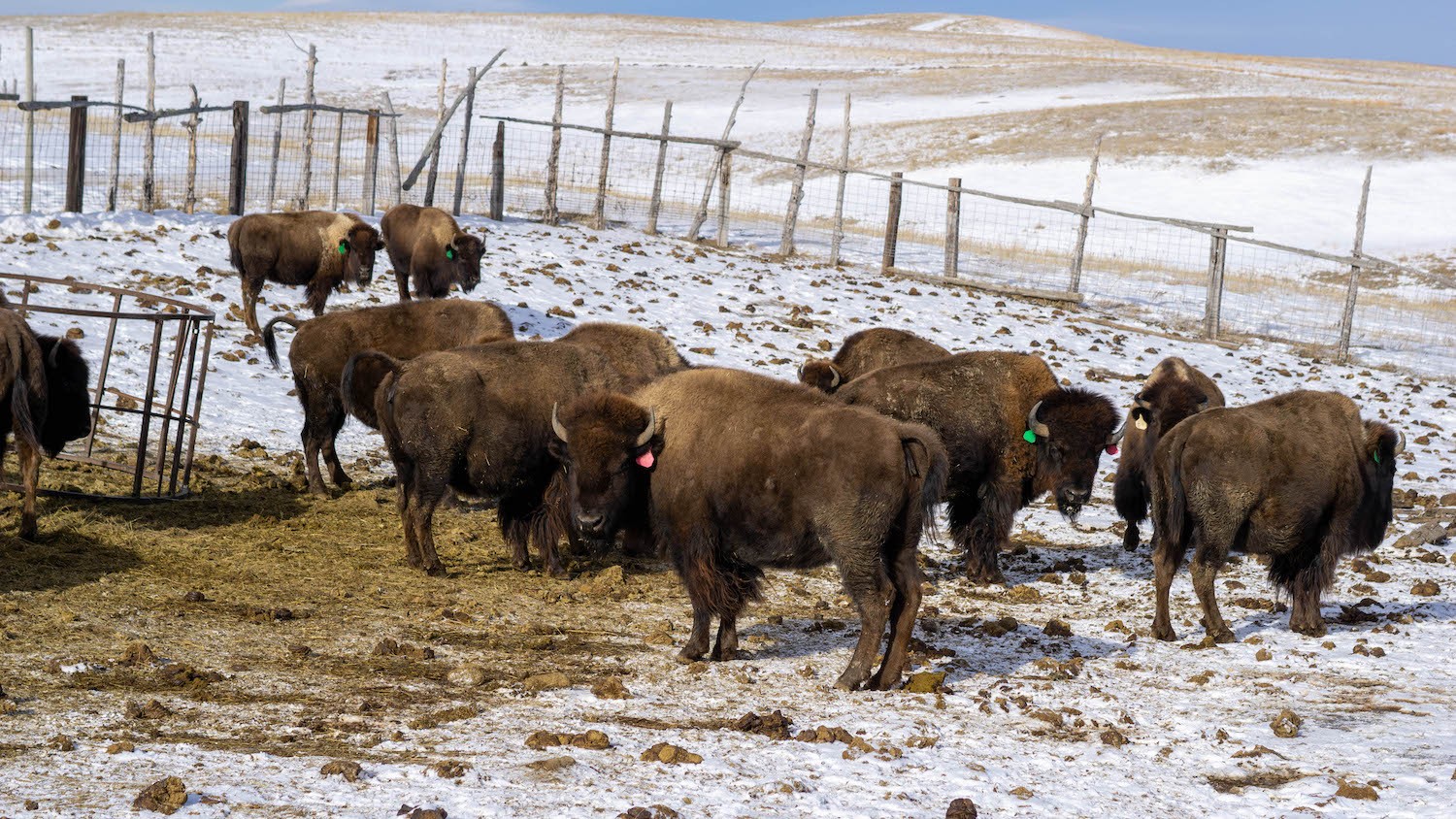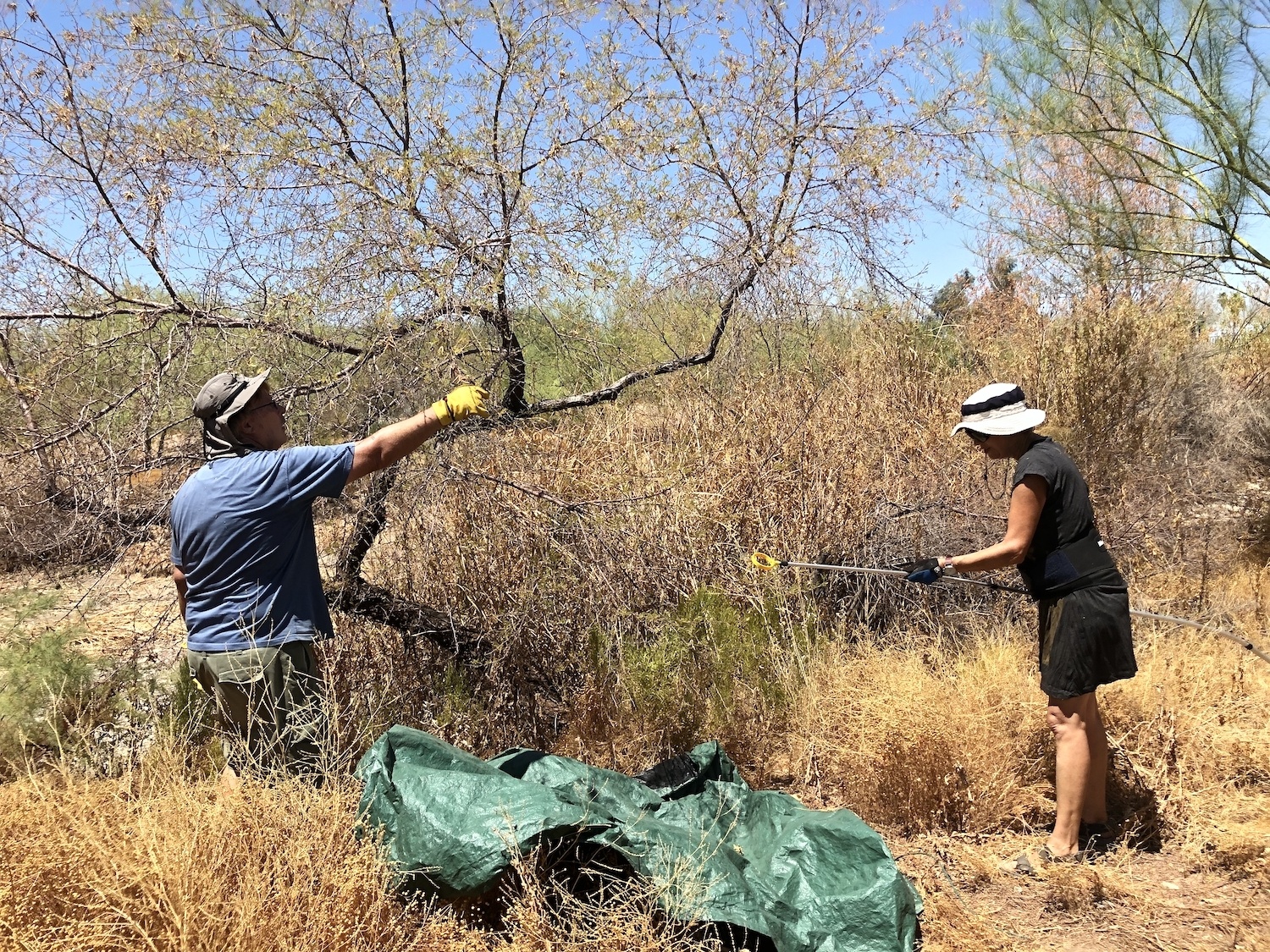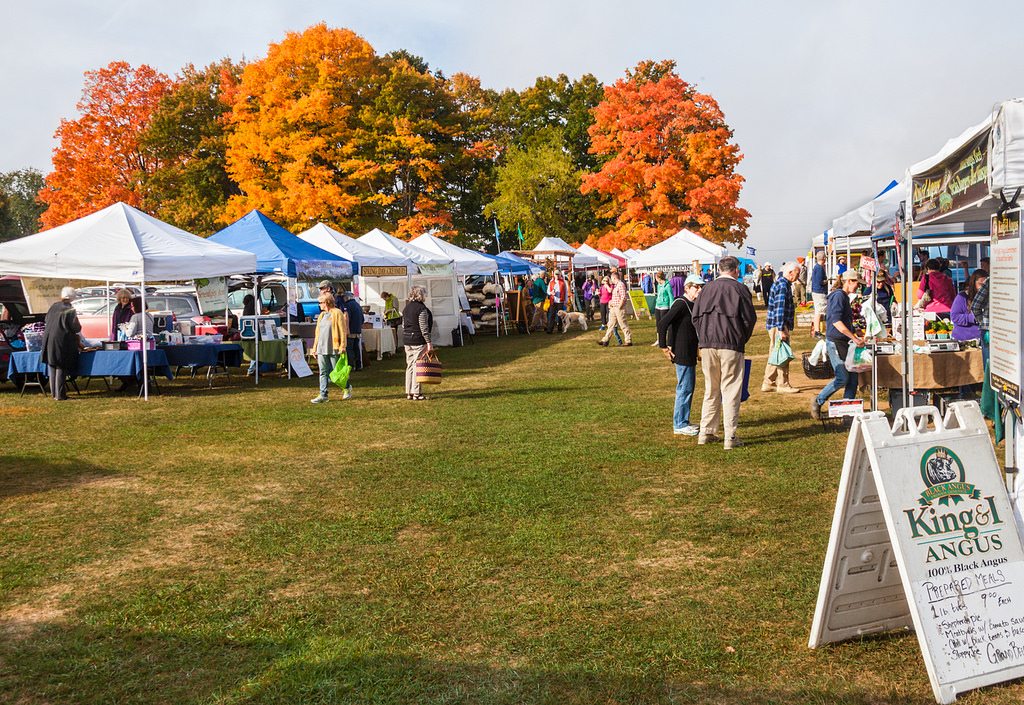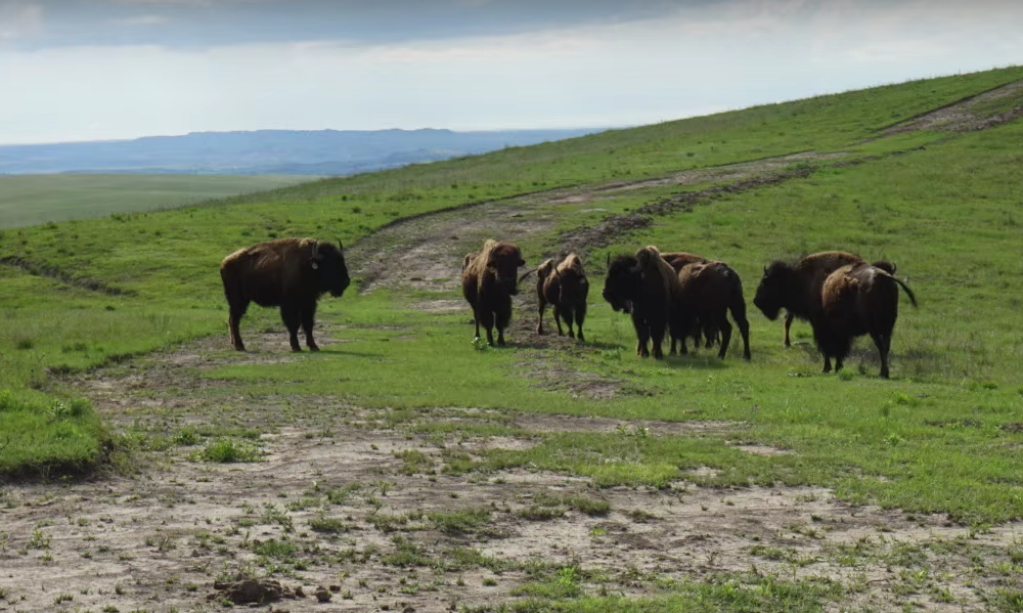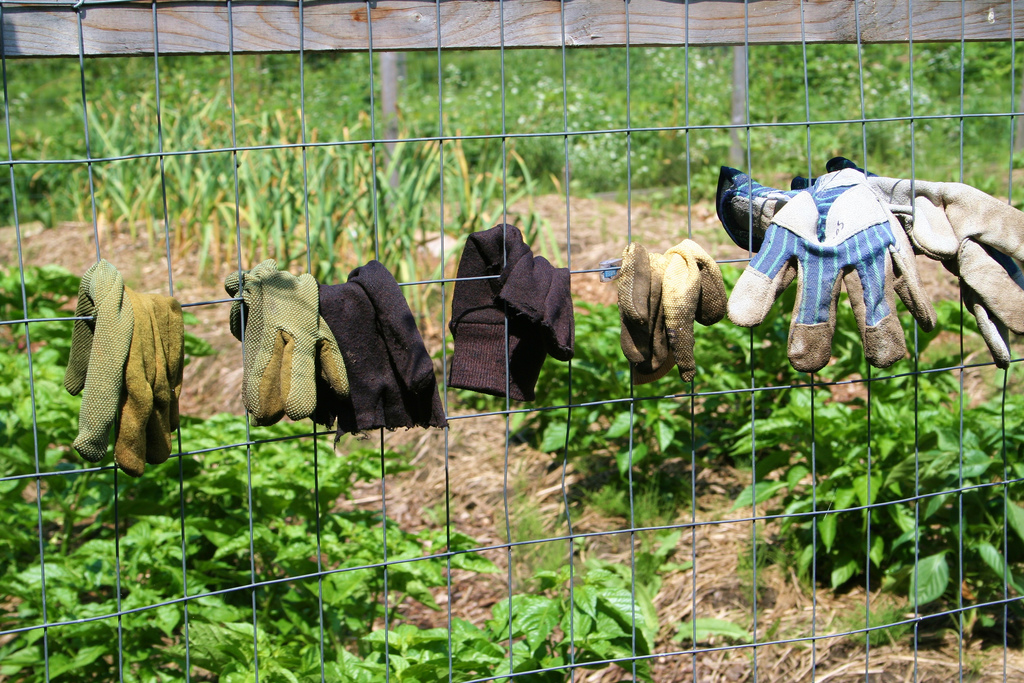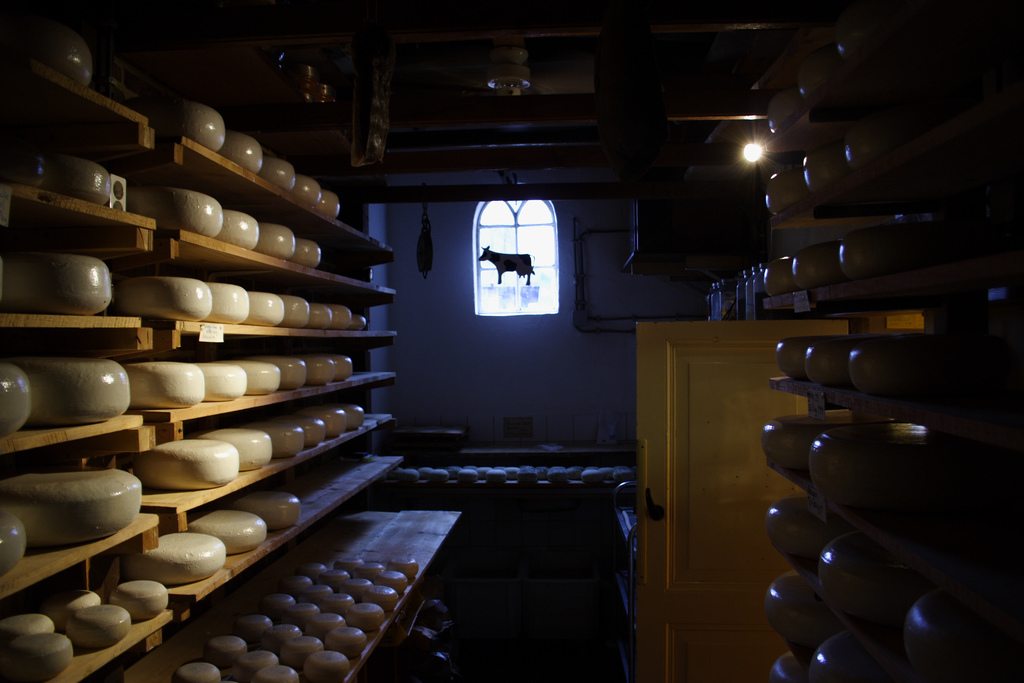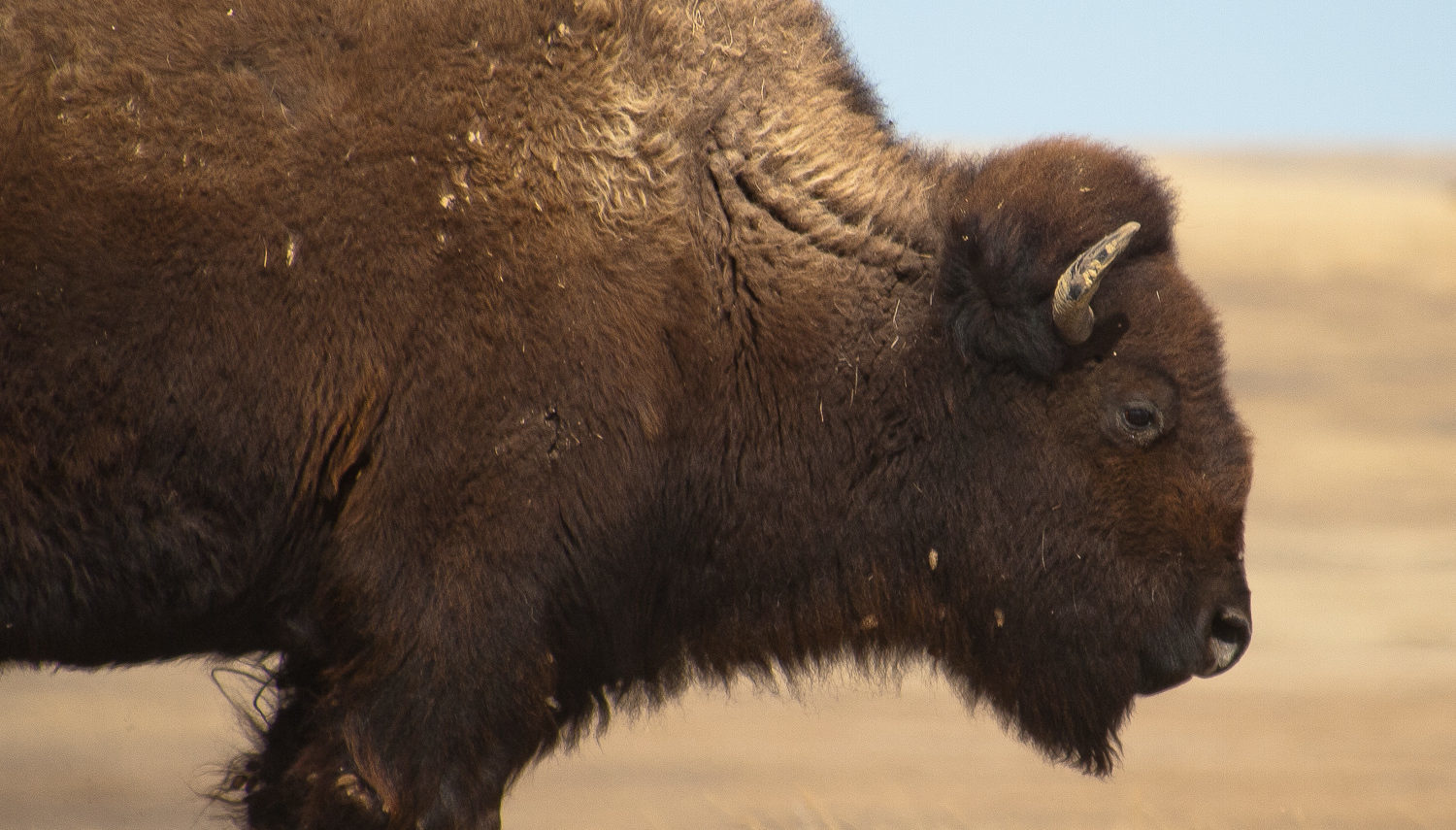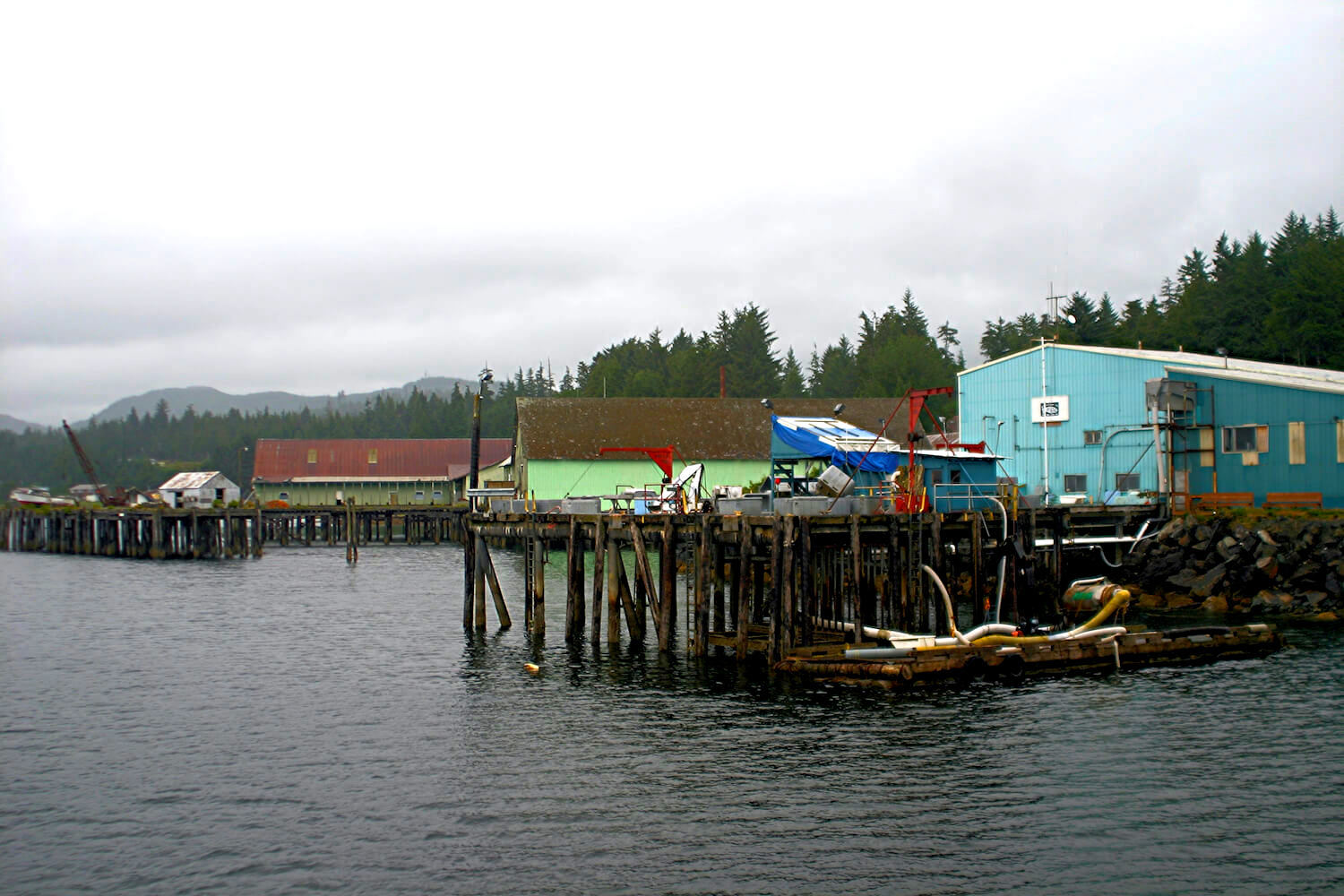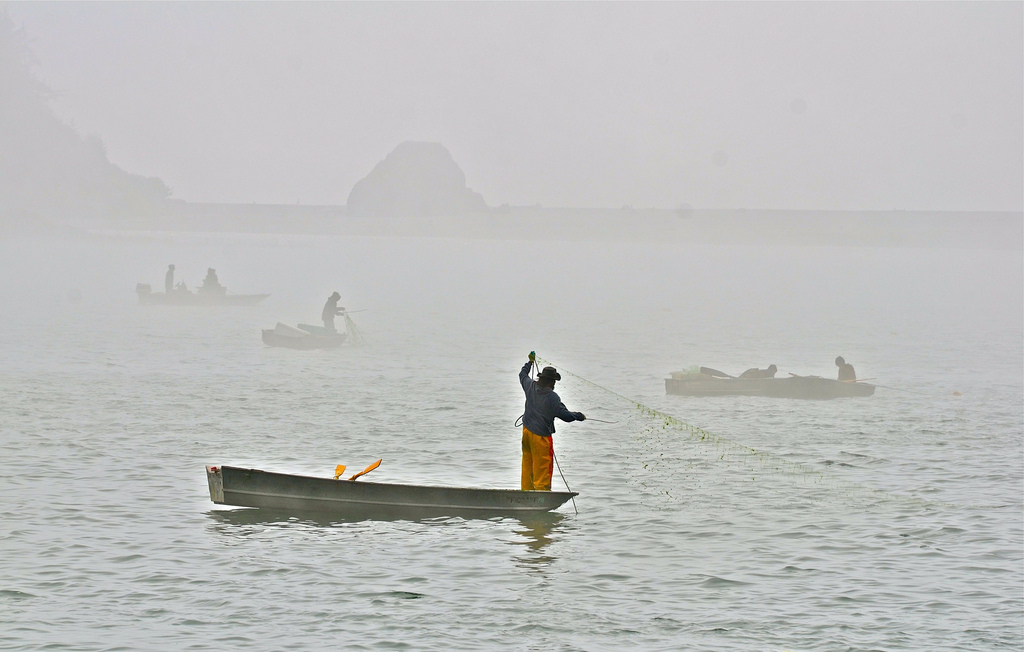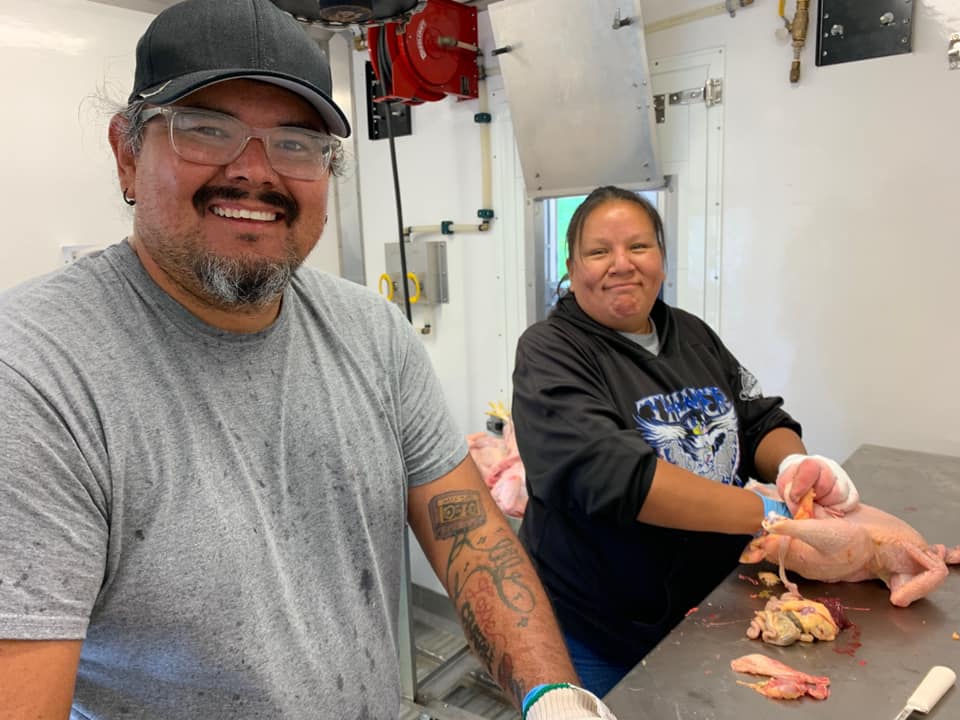
Courtesy of Makoce Agriculture Development
Philanthropy activists say access to capital is everything. For that, Native enterprises need investments to build locally thriving economies—not just loans and grants.
Pictured above: Nick Hernandez and Lisa Iron Cloud process chickens in the Makoce Agriculture Development mobile poultry unit.
From his small farm near Leupp, in a corner of the Navajo Nation in Northern Arizona, Tyrone Thompson (Diné/Black) provides vegetable seedlings for gardeners; produce, including non-traditional foods like kale, arugula, and asparagus; and inspiration, education, and motivation to his wide-spread Navajo, Hopi, and Apache neighbors. His hope is that food production will enable tribal citizens to heal their communities and restore their traditions, leaving behind the commodity food system that’s created so many intractable issues for Native Americans across the country.
Covid-19 has ravaged the Navajo Nation. By of the end of January, in a population of 170,000 people, almost 30,000 confirmed cases had resulted in nearly 1,000 deaths—the majority of those tribal elders, the keepers of language and tradition in a society grappling with ways to hold on to both. As empty shelves in the handful of grocery stores on the reservation became commonplace, Thompson saw a dramatic rise in the number of people seeking his gardening and farming expertise to teach them how to grow their own food. “I’m just a farmer,” he said, “but it seems like for several years, we’ve been trying to re-educate folks about not only traditional agriculture, but agriculture in general. It gives us a cultural grounding and a sense of being connected to the earth, an understanding of where our food comes from. Through assimilation and through a broken food system, we’ve kind of disconnected from a lot of our traditional foodways, our Native foodways. It’s sad to say it took a pandemic to get a lot of us back where we needed to be.”
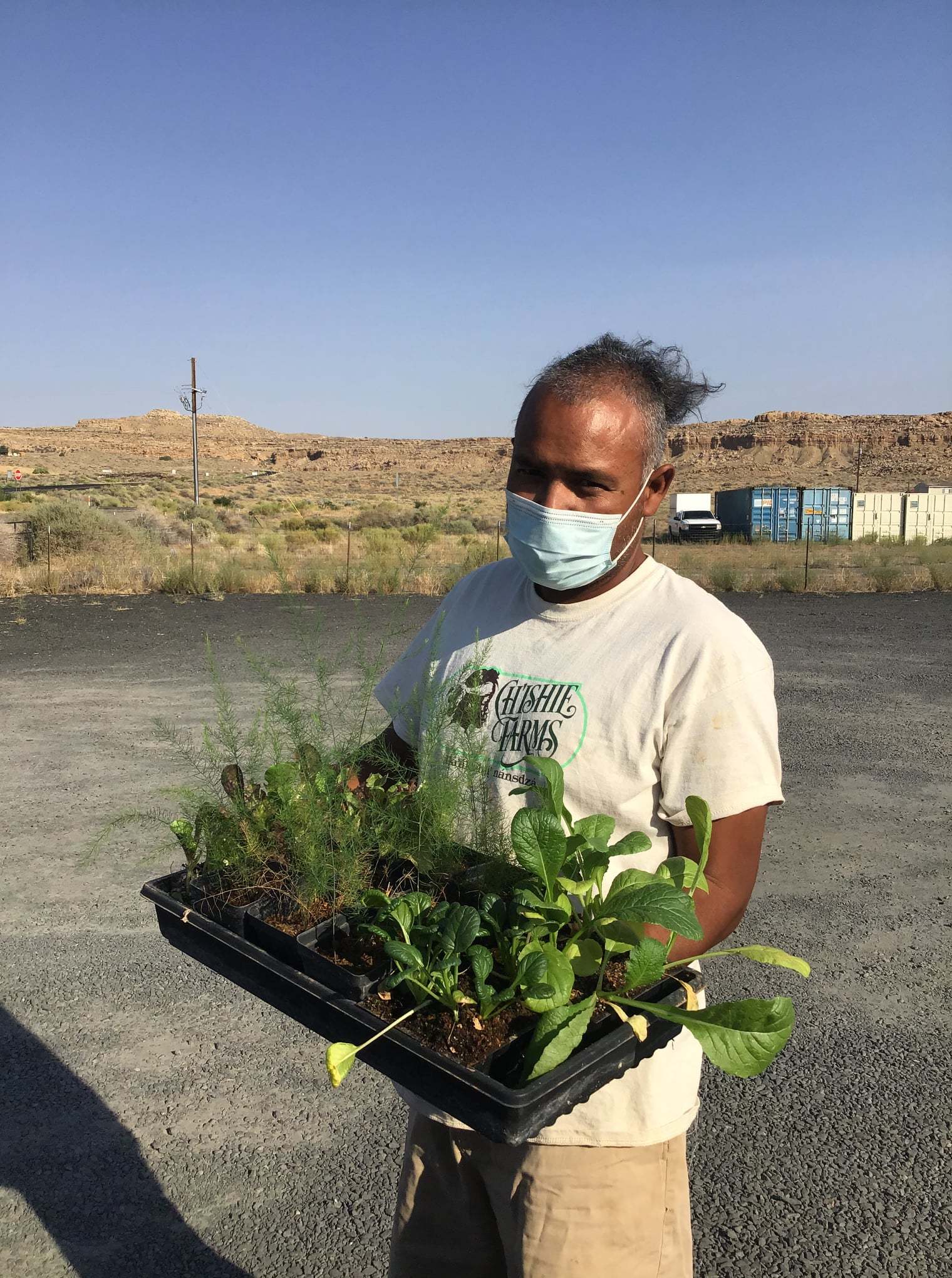
Tyrone Thompson
Tyrone Thompson of Ch’ishie Farms displays his bedding plants.
In 2014, Thompson did a stint as a FoodCorps member at the STAR (Service To All Relations) School, the first off-grid, solar- and wind-powered charter school in the country, which serves around 100 K-8 students in the shadow of Doo’ko’oosłíí (known in English as the San Francisco Peaks), one of the four sacred mountains of the Diné (Navajo people). There, he helped build greenhouses and developed the school farm-to-cafeteria program. In the intervening years, he’s collaborated with other organizations—Tolani Lake Enterprises, Northland Pioneer College, and Native Americans for Community Action, among others, to help his Navajo and Hopi neighbors become food self-sufficient. But in all of his work, Thompson has run into one of the biggest obstacles to Native American food sovereignty: access to capital and the reliance on philanthropic grants for funding.
“One of the things that I’ve been taught in the past has been to not have your hand out,” he said. “As much as I love my partners, we kind of get dependent on the grants. And sometimes we kind of get driven by those grants, as well. You almost don’t get to do what you want to do.”
In food-systems work especially, a wide cultural chasm separates the grantors of funds and the recipients whose work they aim to support. Large foundations and major donors almost always follow well-defined missions that govern their giving. But the money that flows from those funders and into underserved communities can end up being more of an impediment to those communities than a benefit. To be sure, many initiatives, especially those seeking to build food security and sovereignty in Native America, wouldn’t be possible without philanthropic participation. But the approach employed by many funders is often at odds with the culture and actual needs of the people they’re purporting to help.
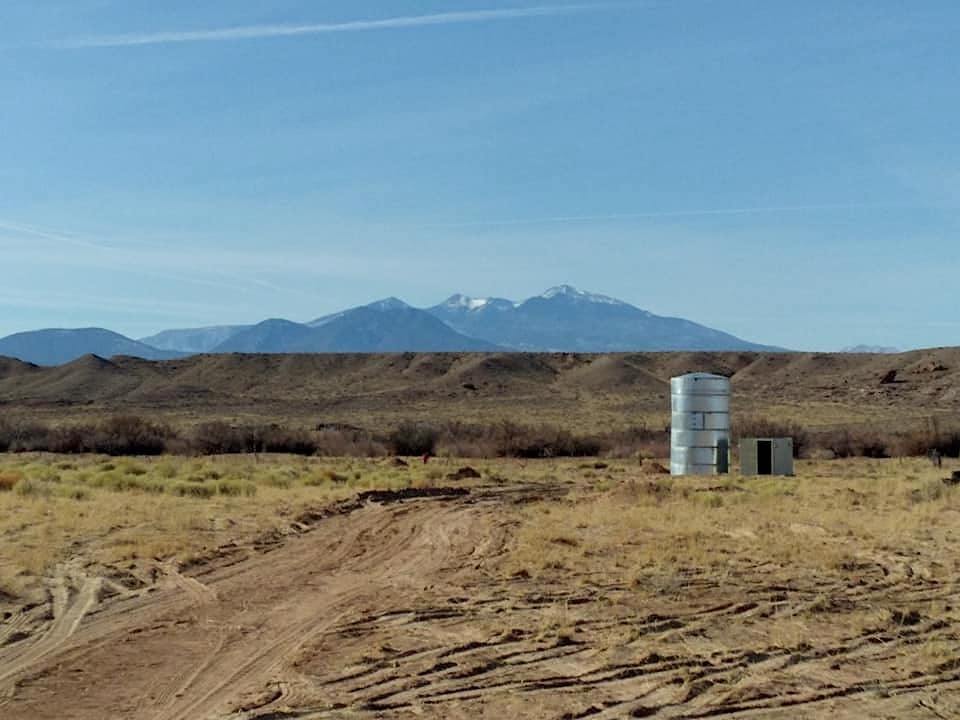
Thompson is working to restore abandoned farmland in the Little Colorado Valley on the Navajo Nation. The San Francisco Peaks are pictured in the background.
Tyrone Thompson
Grant funding seems like a logical way to build capacity and accomplish change, but the reality for tribal communities is more nuanced. The centuries-old clash between Native populations and white European colonizers still plays out on a daily basis in the halls of philanthropy. The great family fortunes of the late 19thand early 20th centuries—the Rockefellers, Astors, Carnegies—that laid the groundwork for modern philanthropy were made in large part by theft of Indigenous lands and with the labor of exploited and enslaved peoples. Yet, according to Dr. Raymond Foxworth (Diné), vice president of grantmaking, development, and communications at First Nations Development Institute (FNDI), less than one percent of philanthropic giving overall goes to Native American projects and causes. And the bulk of that money is directed to museums and universities where it has very little, if any, impact on Indigenous people themselves. What does filter down to communities often comes with obligatory strings, like onerous application and reporting requirements. Foxworth calls that lack of cultural awareness and acknowledgement of past harm the paternalistic behavior of philanthropy.
Edgar Villanueva (Lumbee), vice president of programs and advocacy at The Schott Foundation, has worked in philanthropy for 15 years as a program officer, consultant, and now, with his own philanthropic fund, Liberated Capital. In his 2018 book, Decolonizing Wealth, he defines the cultural disconnect between grantors and their recipients as “the savior mentality in institutional form, which instead of helping—its ostentatiously proclaimed intent—actually further divides and destabilizes society.”
To understand Villanueva’s point, one need look no further than the boards and executive staffs of many of the country’s foundations, where the faces are overwhelmingly white. According to a December 2020 article in the Chronicle of Philanthropy, a study from FNDI, Searching for Inclusion in Philanthropy: A Guide to Equitable Practices in Foundation Hiring, reported that only .4 percent of philanthropy staff are Native American or Alaskan Native. The same paper said that recruiters lack an understanding of Native Americans in general, not realizing that many live in urban areas, close to job centers and away from reservations. In addition, those Native Americans who do work in charitable organizations reported feeling unheard, being treated as tokens, and lacking in opportunities for advancement.
“If you want to be effective, what you should really be collecting is data that Native communities want and need to advance their work.”
Many organizations take a top-down approach to granting, which Villanueva and Foxworth see as a nod to their colonizing roots. Rather than asking communities what they need, they dictate prescriptive approaches that make the most sense to the donor. By establishing strict criteria for making the grants and then requiring unreasonable—and to many grantees, nonsensical—data collection as part of the administration process, they prevent communities from building projects that would actually help them make significant progress toward their goals. “If you want to be effective, what you should really be collecting is data that Native communities want and need to advance their work,” said Foxworth. “You should be listening and partnering with them to find out which data will help them. But I think we have a long way to go for that to become a practice of philanthropy.”
One way to narrow the gulf between foundations and their grant recipients is to funnel funding through intermediaries that have built trust and relationships in the communities they serve. First Nations Development Institute, a 40-year-old, Native-led nonprofit, is one of those. FNDI aims to build economic security in Native communities and receives donations from individuals, tribal entities, corporations, and foundations like the W.K. Kellogg Foundation, the Ford Foundation, and others. “Fundamentally, we believe that Native communities have the knowledge and the ingenuity to initiate, but they may need a little bit of financial support and technical assistance and training,” said Foxworth. “That’s a big contrast to the way philanthropy sees the world.” (Disclosure: The Counter is the recent recipient of a W.K. Kellogg Foundation grant.)
Lack of diversity and cultural understanding is also evident in the professional money managers who handle the endowments for foundations. According to IRS rules, only 5 percent of a foundation’s money is required to be disbursed to grantees—the remainder is invested, usually in Wall Street vehicles that give the greatest potential for growth, and not necessarily positive social impact.
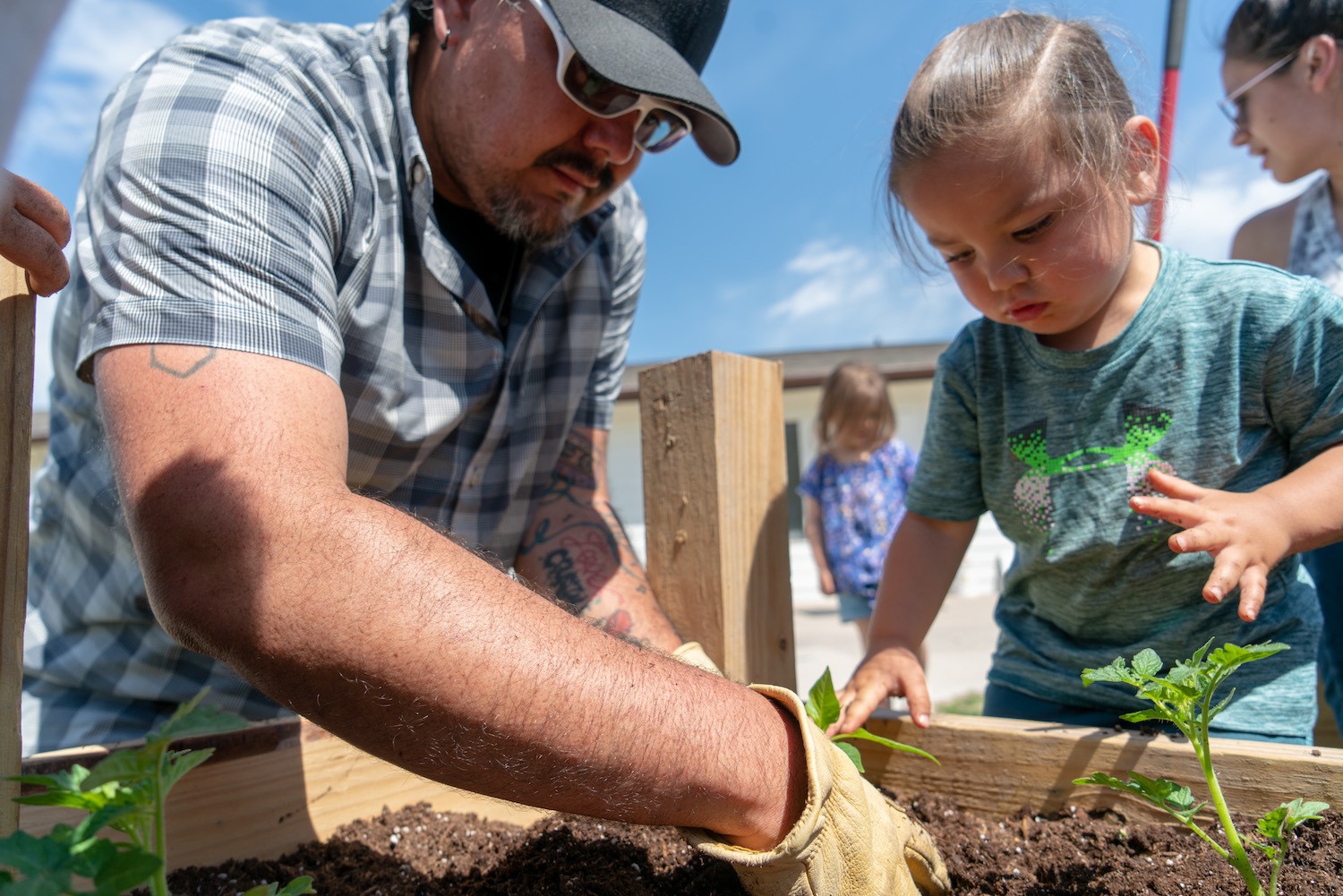
Today, 90 percent of the food on Pine Ridge comes from somewhere else. But 50 years ago, Nick Hernandez (left) said, the Lakota people were self-sufficient.
Courtesy of Makoce Agriculture Development
Philanthropy activist Villanueva says he’s beginning to see some foundations shift their focus from traditional wealth building with the corpus of their endowments to more mission-driven investments. But for many, there’s still a gap between the mission and the reality. “The problem with philanthropy is that we’re so oriented to accumulating more wealth, like we’ve internalized capitalism and colonialism so much in this industry, that we’re separated internally,” he said. “You have program staff who are working in communities, and then there are investment people they don’t even know. Often that work is subcontracted out to wealth managers and investors who use no social justice analysis. The big conversation is how do we actually push philanthropy to think about all of its money, not just the 5 percent?”
Zach Ducheneaux, a member of the Cheyenne River Sioux Tribe, is the newly-named administrator of the U.S. Department of Agriculture’s (USDA) Farm Service Agency. He’s also former executive director of the Intertribal Agriculture Council and founder and former board chair of Akiptan, a Native Community Development Financial Institution. He put it more plainly: “What is needed is access to capital on fair financial terms where Indian Country can be in control of its own destiny,” he said. “What’s really needed is for philanthropy and institutional investors to say, ‘you know what, it’s really time we invest our money where our mouth and our mission is,’ and draw their money out of Wall Street and put it out into these communities with patient terms so that the money can be used to grow an ecosystem there.
“Right now, it’s a drop here, a drop there. And you might give a little hope, but you don’t really give any ability to the people you’re trying to give hope to, to really take control of their own destiny. Indian Country is the most brittle financial ecosystem that we’ve got in this country.”
“Right now, it’s a drop here, a drop there. And you might give a little hope, but you don’t really give any ability to the people you’re trying to give hope to, to really take control of their own destiny.”
Ducheneaux added that lack of access to patient capital, long-term investments made with an eye to social impact rather than maximizing returns for investors, and redlining—the discriminatory practice of denying loans to communities of color and their businesses—make it extremely difficult for Native entrepreneurs to find the financing they need to build successful businesses. “Now that’s the term with ‘red’ in it that I want to get rid of. They can keep the goddamn Redskins if they’ll stop redlining us with credit,” he said.
When Nick Hernandez (Oglala Lakota) finished college in 2006, he was passionate about both healthy eating and changing the world. When he returned home to Porcupine, South Dakota, on the Pine Ridge Reservation, his grandmother told him, “There’s 40 acres. Go pick a spot and plant a garden. That’s the way I can teach you.”
That garden set Hernandez on a path of discovery and public service, and in July of 2019, he founded Makoce Agriculture Development, a non-profit organization focused on building gardens and local food systems on Pine Ridge. Regi Haslett-Marroquin, a native of Guatemala who lives in Northfield, Minnesota, where he’s CEO of the Regenerative Agriculture Alliance, is one of his mentors. Hernandez credits Haslett-Marroquin with the evolution of his thinking about creating systems and how food plays an integral part in building healthy and flourishing economic ecosystems in local Indigenous communities.
“Two generations ago, people actually had their hands in the soil. They made the things that they wore; they produced the foods that they consumed. And they did it collectively as communities.”
Even though today, 90 percent of the food on Pine Ridge comes from somewhere else, 50 years ago, Hernandez said, the Lakota people were self-sufficient. “Two generations ago, people actually had their hands in the soil. They made the things that they wore; they produced the foods that they consumed. And they did it collectively as communities,” he said. “And we can go back to that. That’s what actually needs to be done, rather than relying on these large commercial industries to supply what we think we need or want. When it comes down to the basic human needs, it’s all here.”
And now, during the pandemic, food sovereignty has become even more critical. “It’s become a dire, life-and-death situation. With the virus, it’s all relevant. We’re talking agricultural food systems, not monoculture thinking; diverse opportunities that actually need to be rooted and grounded and built not only for the sake of humanity, but also for the small community. We need that for the next generations,” he said.
Lack of significant funding for projects is tied to the other big barrier facing communities seeking to create their own food security: the archaic and confusing system of tribal land ownership and control. Diminished access to hard assets precludes Native ventures from being attractive investments in the eyes of money managers and leaves them subject to the whims of grantors.
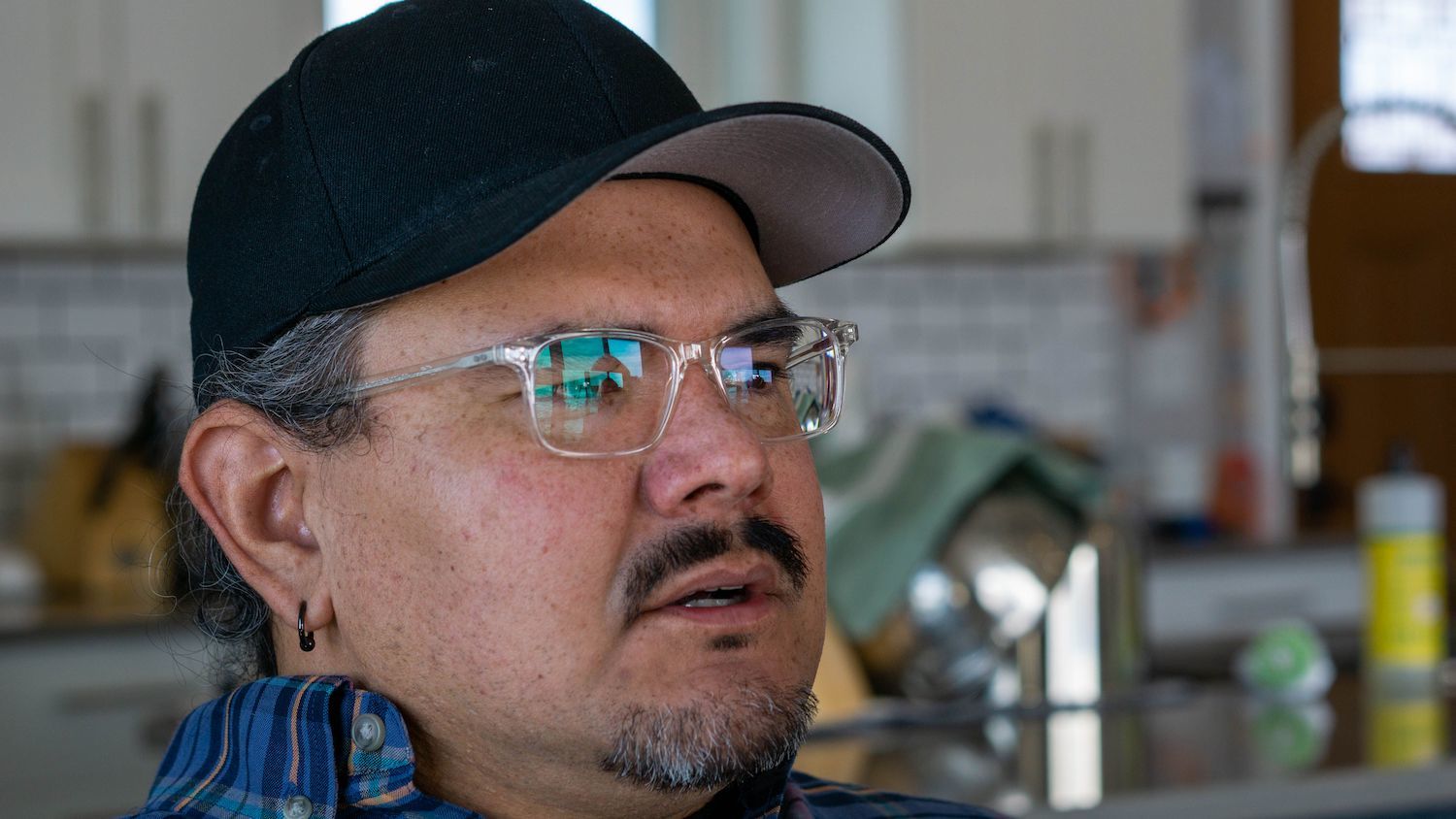
Nick Hernandez sits for an interview in his Porcupine, South Dakota home on the Pine Ridge Reservation.
Arlo Iron Cloud
In September 2019, Hernandez set out to lease 15 acres on the reservation to build a demonstration farm with livestock and crop production, where community members could participate and learn. In the process, he said, he ran into an unyielding wall of bureaucracy in the Bureau of Indian Affairs and the Oglala Sioux Tribal government, one exacerbated by the pandemic. So, he put his bigger vision for a working farm on temporary hold. Historical processes and procedures haven’t been updated much since the signing of the tribal constitution in 1934, Hernandez said, and making changes, like many issues in the U.S. today, has turned into a political fight.
“In truth, that’s the reason why Makoce exists,” he said. “It’s due to those non-existent or non-functioning systems that take political movement to work. I basically wanted to develop an organization that in some form would not have to go through that political network to actually create change.”
After nearly 18 months, the bureaucratic snafu has finally come to a resolution, and Hernandez will be signing the lease for the land this month. Once leasing is completed, his organization will be able to get to the work of building the farm. He believes it will be easier for families who have allotments, parcels of land handed down through generations since the signing of the original treaties, to avoid the broken bureaucracy and create their own farms based on the Makoce model.
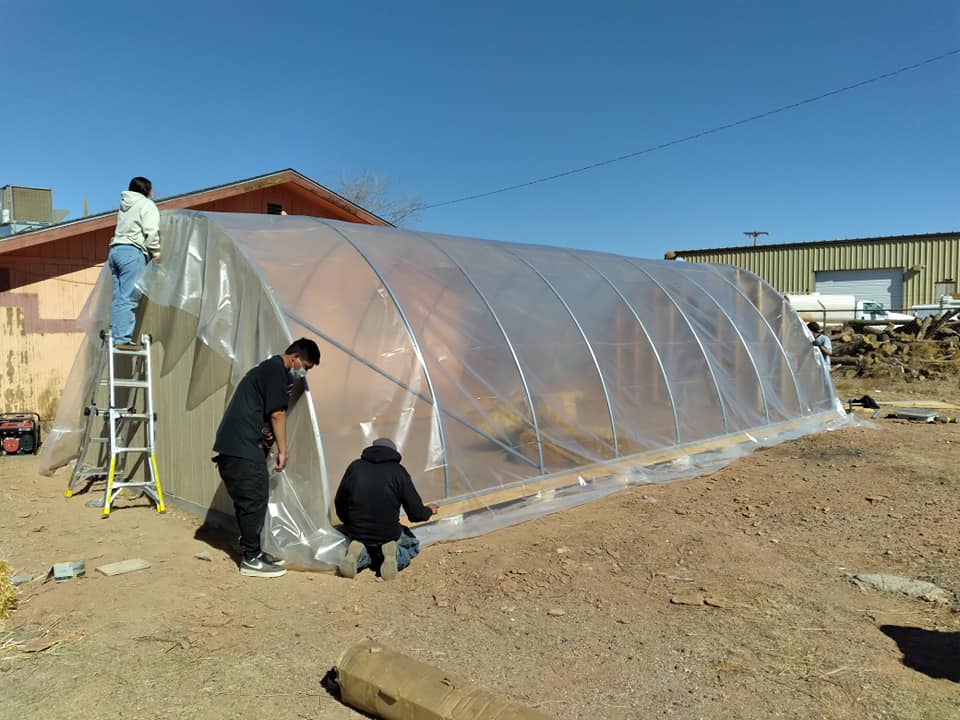
Volunteers build a hoop house at the Leupp Senior Center on the Navajo Nation.
Tyrone Thompson
But that still doesn’t entirely solve the problem of access to capital. While the land issue created a shift in his plans, Hernandez has been busy applying for grants. Last summer, he received a two-year, $155,000 organizational development grant from Northwest Area Foundation, along with smaller, Covid-related grants from other organizations. Last year, grants from FNDI allowed him to acquire and refurbish a mobile poultry processing unit. He spent the spring and summer performing maintenance, cleaning, and sanitizing, even though the pandemic interrupted supply chains and made it harder to get the equipment ready. “Covid has put huge issues on access to equipment, supplies, and process for my projects,” he told me in a recent email. But still, he’s been able to work with three community families and a poultry farmer to process 500 chickens and turkeys, resulting in about 2,500 pounds of locally-raised meat for people in Porcupine. The effort is a boon for people whose access to food is mostly limited to a few small grocery stores and convenience marts on the reservation. The closest stores of any size, like Walmart or Safeway, are in Rapid City, about 90 minutes away.
Even though progress has been slower than he would have liked, Hernandez remains optimistic. “We can make locally thriving economies by utilizing and not taking for granted the things that we are surrounded by. We’ve got 2.2 million acres, one of the largest rural water systems, access to trees, access to pollinators, and the open space for systems of the 21st century that we can create. That will give us access and opportunity for economic community asset building and community growth,” he said.
“One of these institutions, one of these philanthropies that’s giving lip service to food sovereignty and wanting to empower local people, needs to fund his damn business plan.”
I asked Ducheneaux, the USDA administrator, how Hernandez or someone like him could find the money he needs to realize his vision and keep it sustainable. “One of these institutions, one of these philanthropies that’s giving lip service to food sovereignty and wanting to empower local people, needs to fund his damn business plan,” he said. “Do it as an investment and reap a return on the investment as he grows his business. That grant model, phase one of the implementation process, still doesn’t give him capital to secure the infrastructure that he needs. It all comes down to capital access.”
Ducheneaux, a third-generation cattle rancher, says he’s been dreaming of a better way to do ag finance since 1993, when he was a distressed borrower, because the system has been fundamentally broken since the 1970s. Akiptan, founded three years ago, has a $3.8 million portfolio of investments in 70 Native American businesses throughout the country, including everything from cattle to greenhouses to livestock transportation.
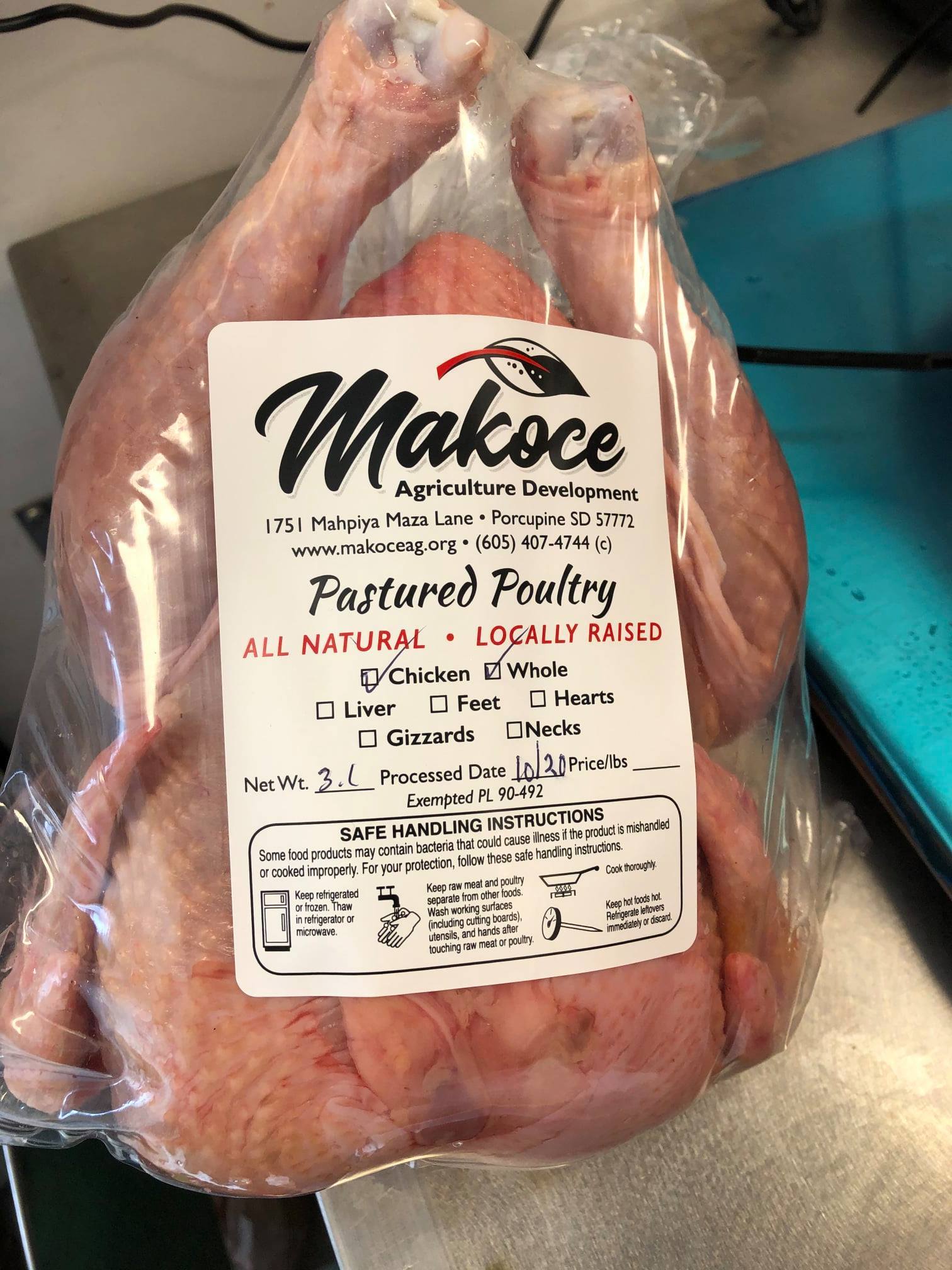
Courtesy of Makoce Agriculture Development
Hernandez works with three community families and a poultry farmer to process 500 chicken and turkeys, resulting in about 2,500 pounds of locally-raised meat for people in Porcupine.
Akiptan, which, in the Lakota language, means working together cooperatively, offers capital through an interest-only loan program for start-up, general operating expenses, or expansion to both adult- and youth-owned ventures. After five years, the borrower begins paying back the principal and interest over a fixed term. In addition to cash, the program offers training in financial literacy and technical support with an eye toward creating long-term sustainability and economic success for both the business and the community, something grant programs, by their very design, aren’t able to do.
“This [community agriculture] is something that we’ve got to start investing in, not granting to or loaning to,” Ducheneaux said. “Even with the cannibalistic interest rates that are charged in Indian Country [anywhere from five to 50 percentage points higher than what prime borrowers pay in the rest of the country], it’s not the interest rate that you’re paying that upsets your business model. It’s the timeliness of the recapture of principal that’s expected from the lender.” Ducheneaux hopes that as Akiptan proves that its investment model works, philanthropic organizations will start to look at Native enterprises as legitimate opportunities, rather than as organizations that need handouts, a symptom of the unacknowledged white savior mindset that permeates philanthropy to this day.
In his book, Villanueva talks about the Native principle of reciprocity, the belief that everything is interconnected and that a gift given today will be reciprocated later, not on a transactional basis, but because the gift implies a relationship between giver and receiver. “We believe that a gift goes on in perpetuity from the point of view that I give to you because I know in my time of need that you’re going to give to me,” he told me. “I think it’s so fundamental to the shift in power and shift in perspective that we need in philanthropy, to know that we’re not only just giving. I say to folks that I’m not asking for your money for poor Indian or Black folks; what I’m doing is extending a lifeline into your own humanity and your own liberation by giving and being a part of our lives. Money and giving can be tools that help to actually create relationship where no relationship was, because ultimately, I think that money and the hoarding of wealth is what created a brokenness in our relationships to begin with.”
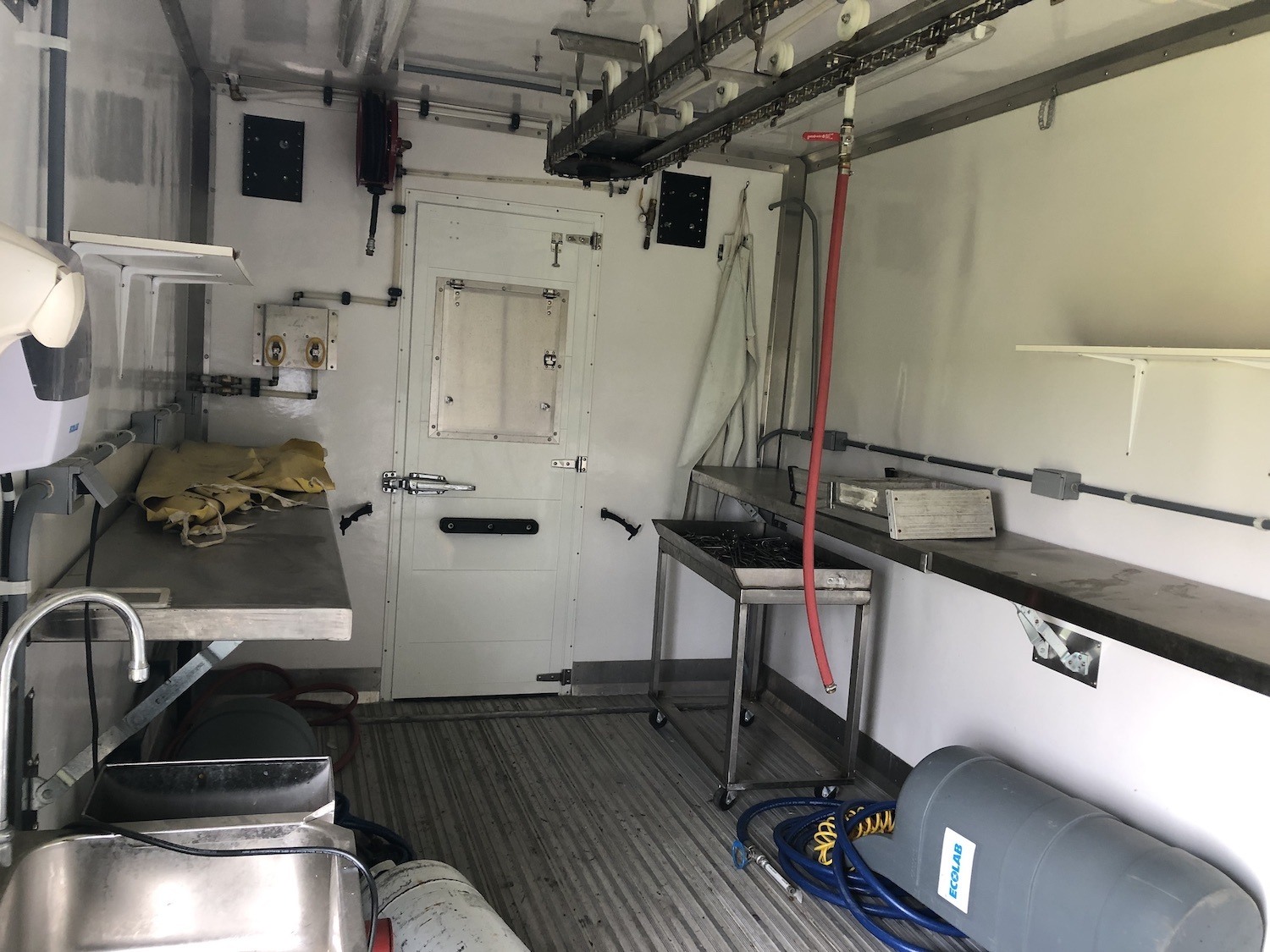
Inside Makoce Ag’s mobile poultry processing unit.
Courtesy of Makoce Agriculture Development
Through his Decolonizing Wealth Project, in 2019 Villanueva started Liberated Capital, a fund to invest in communities of color and their related projects. By using a “money as medicine” approach, Liberated Capital provides unrestricted resources to organizations working toward transformational social change. In addition, the Native American Community Response Fund, established in answer to the pandemic, delivers quick-response grants to Native-led organizations providing relief services for communities throughout Indian Country, as well as cash to individuals in need.
Individual donors to Liberated Capital become part of a giving circle, allowing them to interact with each other and with grantees to build relationships and trust. Villanueva said the organization is undertaking programming “to hold space for conversations about healing, to actually create proximity between people who have money and the people we’re supporting, to build a community of folks who have a different conversation that breaks down the walls between funder and recipient, between victim and perpetrator.”
In its year of existence, Liberated Capital has caught the attention of larger funders, also. “I’ve actually been really surprised at the number of foundations who have wanted to invest in our infrastructure and give us money as well,” he said. “I’ve been amazed at how folks have sent money our way without asking us to jump through all the hoops.” Villanueva said those foundations trust Liberated Capital to get the money where it needs to go by virtue of the knowledge and community relationships established through the Decolonizing Wealth Project.
“People ask me, are things getting better and are more resources moving to Native communities? The empirical data would tell us no. But I think the more optimistic side is that community-based organizations are speaking up.”
Even as the struggle to overcome systemic institutional and structural issues continues, countless Native-led organizations of all sizes are working to secure food sovereignty and its accompanying economic benefits in tribal communities all over the country. The Lakota Food Sovereignty Coalition held its first food summit last spring and has scheduled the second edition for August this year. Groups in Arizona, both Native and non-Native, have coalesced around the issue of restoring Indigenous foods to the 22 reservations across the state. Tanka Bar, a Native-owned commercial enterprise I wrote about in 2018 and 2020, has established the Tanka Fund and Tanka Regenerative Agriculture Cooperative to bring the buffalo back to the people and prairie of Pine Ridge and surrounding Indigenous nations in the Northern Plains. But lack of capital continues to be daunting.
“People ask me, at the end of the day, are things getting better and are more resources moving to Native communities? The empirical data would tell us no,” said FNDI’s Foxworth. “But I think the more optimistic side, looking at the interactions and relationships between philanthropy and Native communities, is that community-based organizations are speaking up. And funders are speaking up and saying, ‘Look, we have to find a better way to provide resources to the communities that need them most, and we have to develop a better system than these archaic ways that we know are not working.’ There are more opportunities to at least offer a perspective and Indigenous voice to this conversation, which is progress.”

